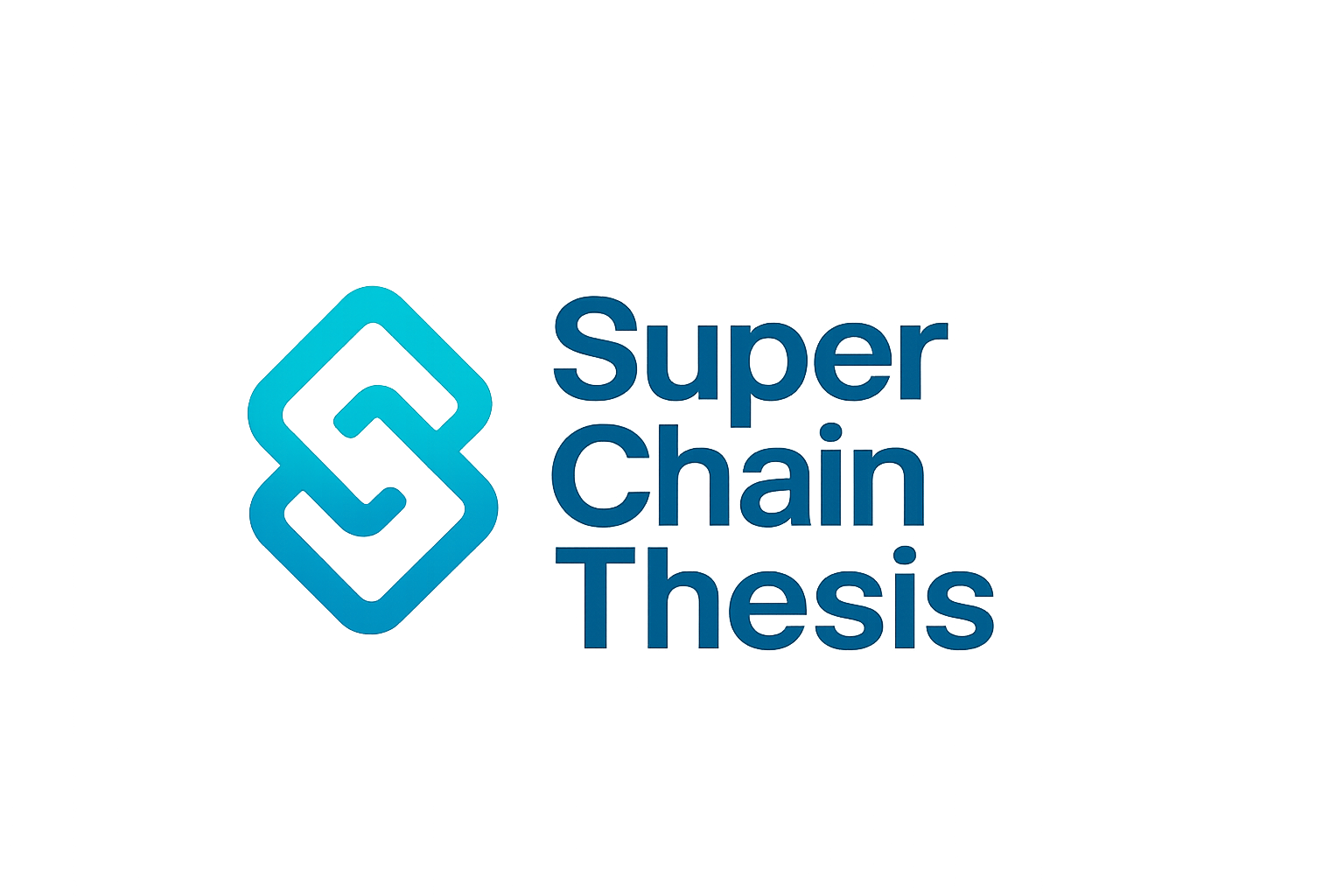
Solana’s relentless pursuit of high-speed, scalable blockchain infrastructure has reached a new milestone with the introduction of Ephemeral Rollups. Developed by MagicBlock, this innovation is redefining how decentralized applications (dApps) and DeFi protocols operate on Solana, unlocking real-time performance that rivals traditional web infrastructure. At a time when Binance-Peg SOL (SOL) is trading at $210.24, up $8.72 in the past 24 hours, the network’s technical evolution is drawing fresh attention from developers and investors alike.

What Are Ephemeral Rollups? The Real-Time Scaling Paradigm
Ephemeral Rollups are not just another Layer 2 solution. They are temporary, high-speed execution environments that can be spun up on-demand to handle bursts of activity or specialized workloads. Unlike conventional rollups on other blockchains, these ephemeral environments maintain direct access to Solana’s native liquidity and composability, no bridges or new tokens required. This means developers can elastically scale throughput for their dApps while retaining seamless integration with the broader Solana ecosystem.
The most striking feature is latency: with end-to-end times as low as sub-50 milliseconds, Ephemeral Rollups enable use cases previously out of reach for blockchains, real-time gaming, high-frequency trading, and instant messaging among them.
Key Features Powering Next-Gen Solana dApps
Core Benefits of Ephemeral Rollups for Solana dApps & DeFi
-
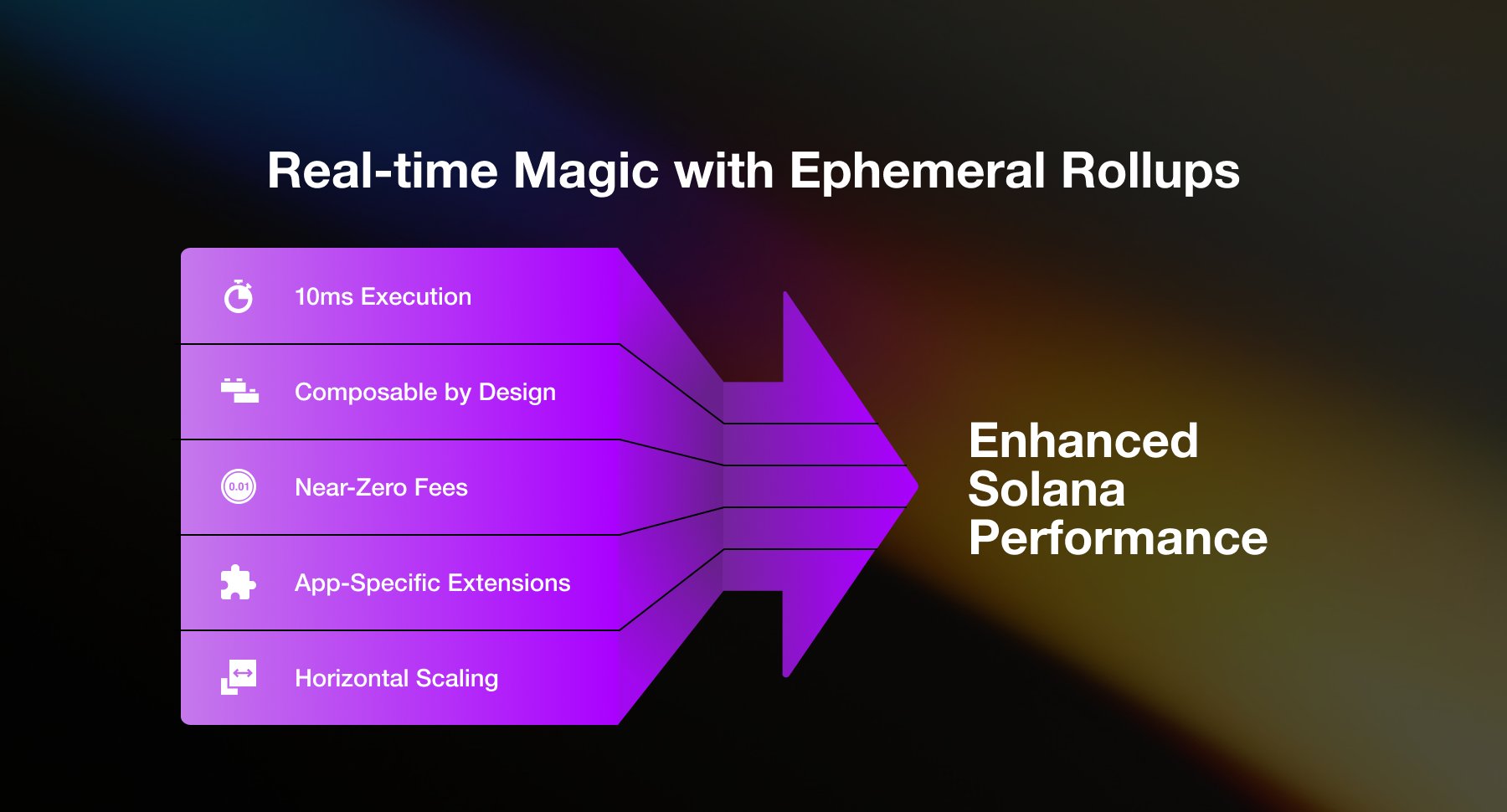
Ultra-Low Latency Execution: Ephemeral Rollups enable transaction processing with end-to-end latencies below 50 milliseconds, unlocking real-time experiences for decentralized applications and DeFi platforms.
-
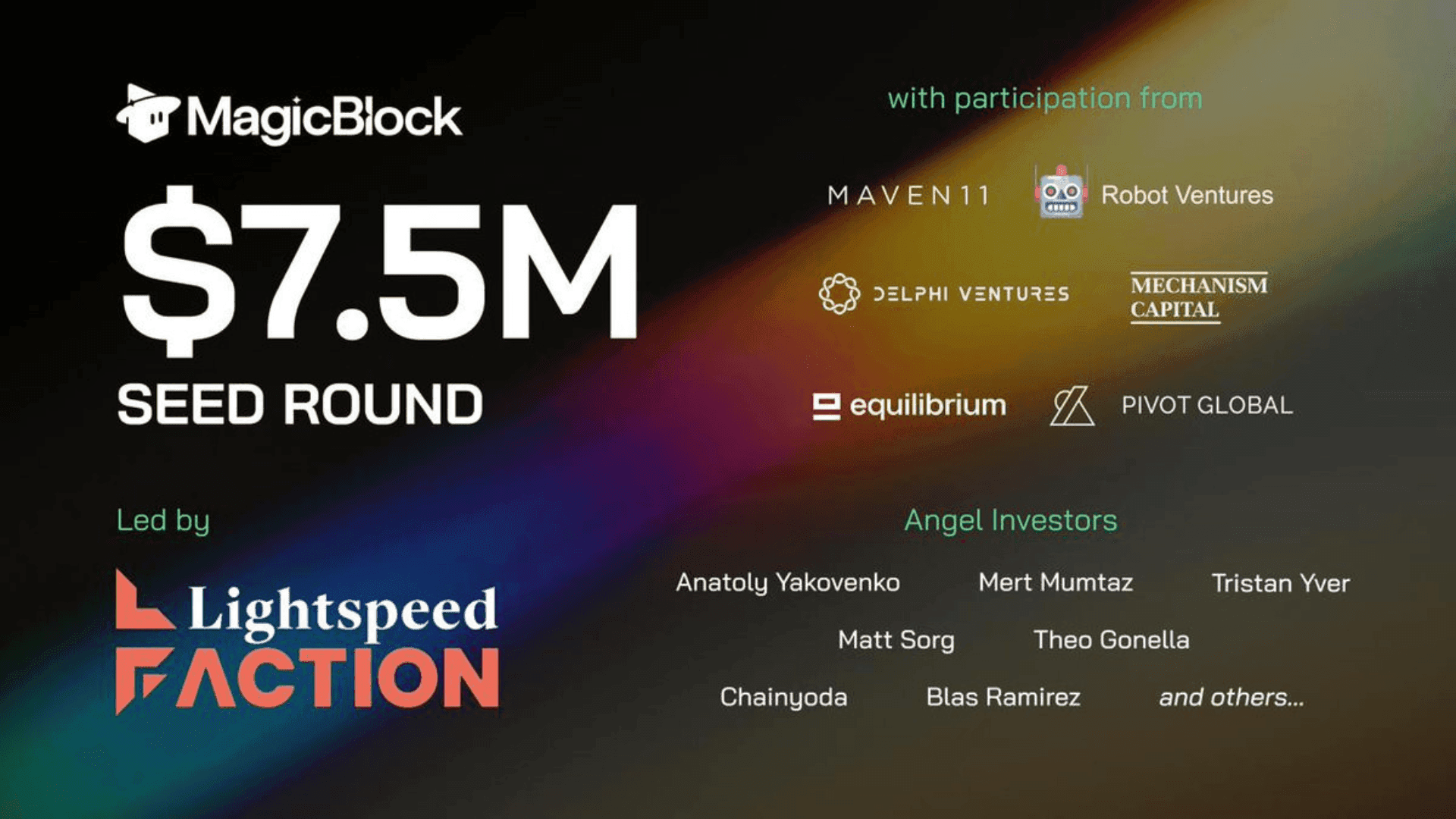
On-Demand, Elastic Scaling: Developers can spin up high-performance execution environments as needed, allowing for dynamic scaling of transaction throughput during periods of high demand.
-
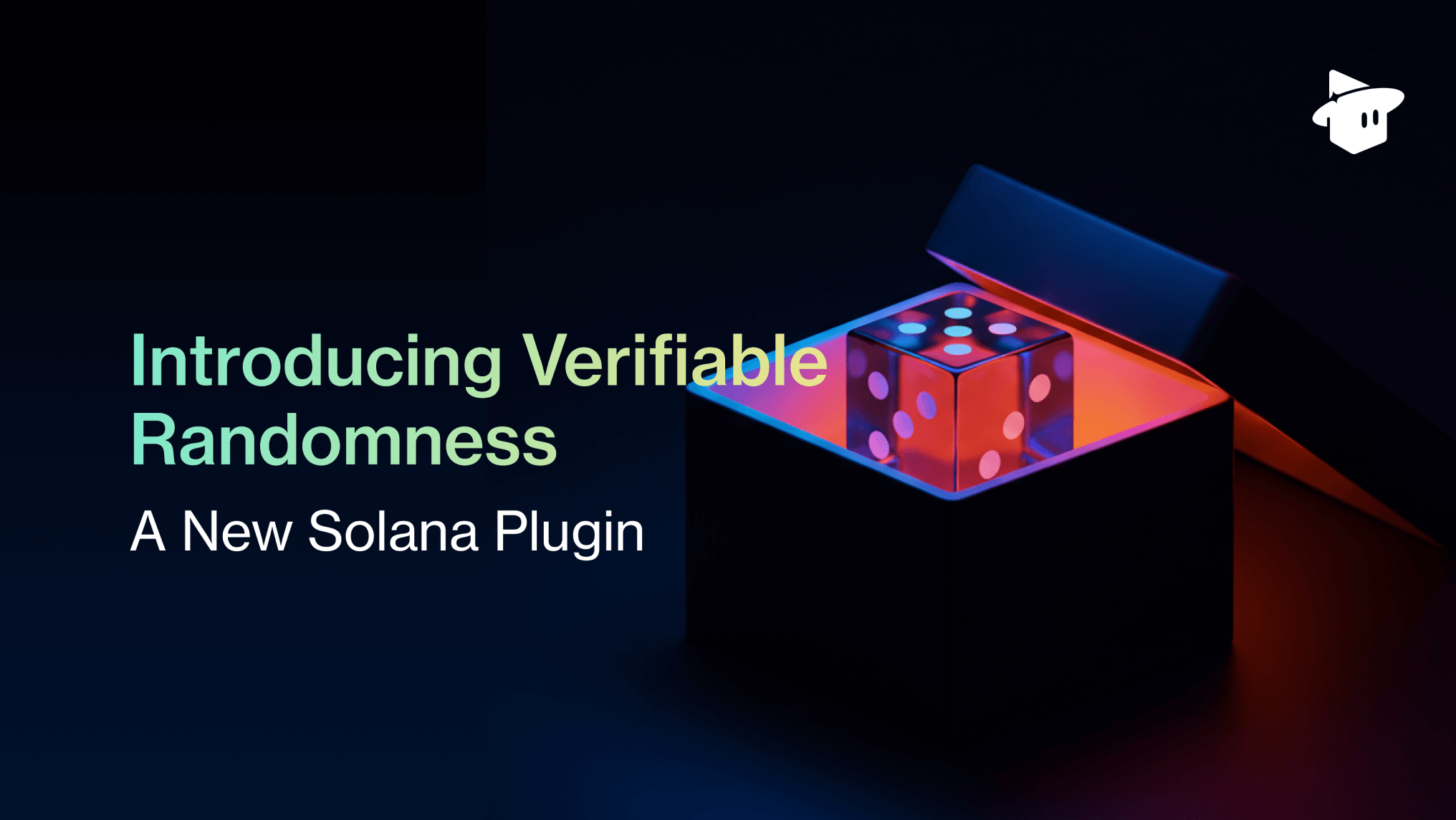
Seamless Solana Composability: Unlike traditional Layer 2 solutions, Ephemeral Rollups maintain full access to Solana’s liquidity and composability without requiring bridges or new tokens.
-
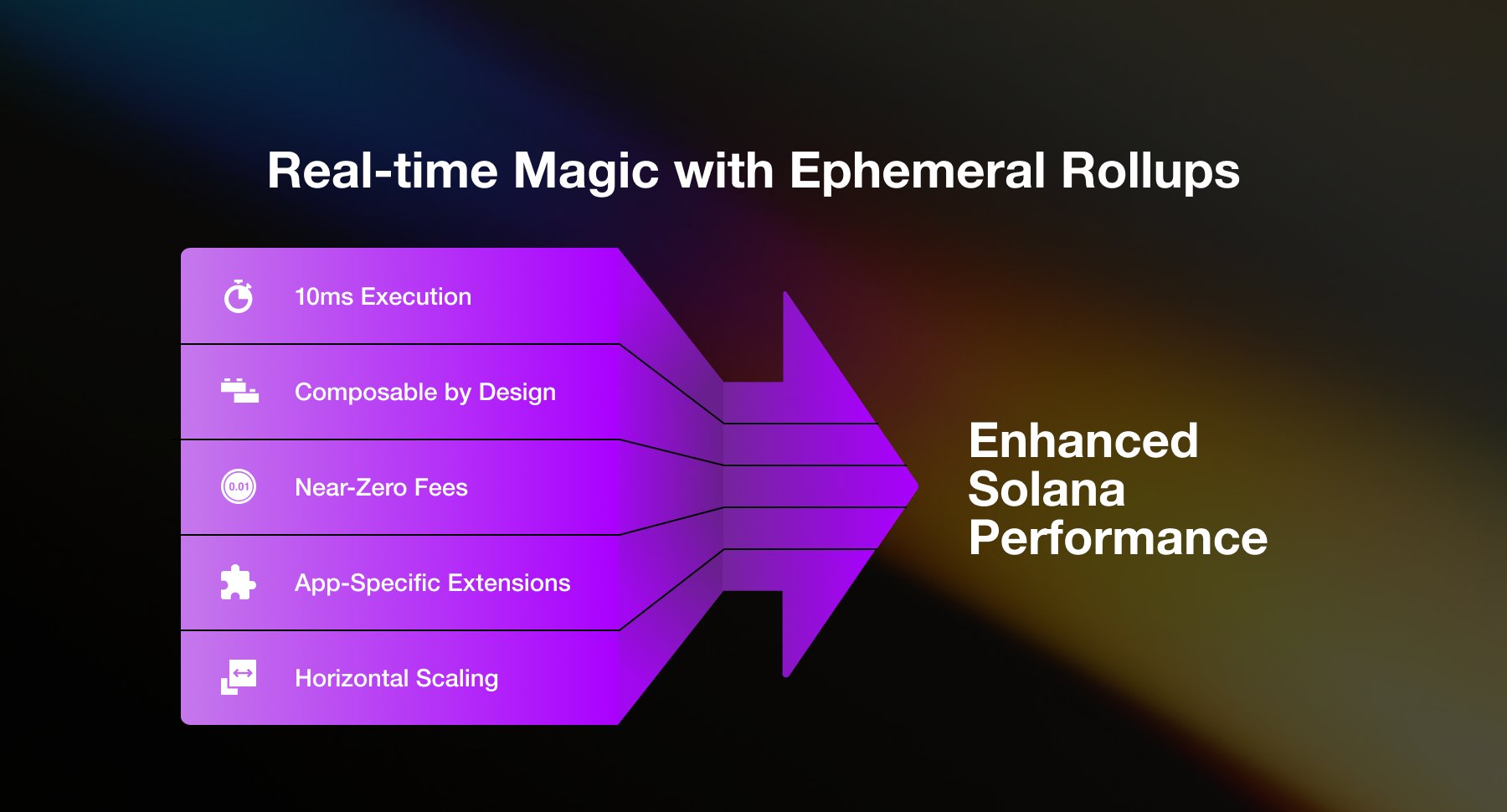
Trustless Security & Settlement: All rollup transactions are validated and settled on Solana Layer 1 with cryptographic guarantees, preserving the blockchain’s security model.
-
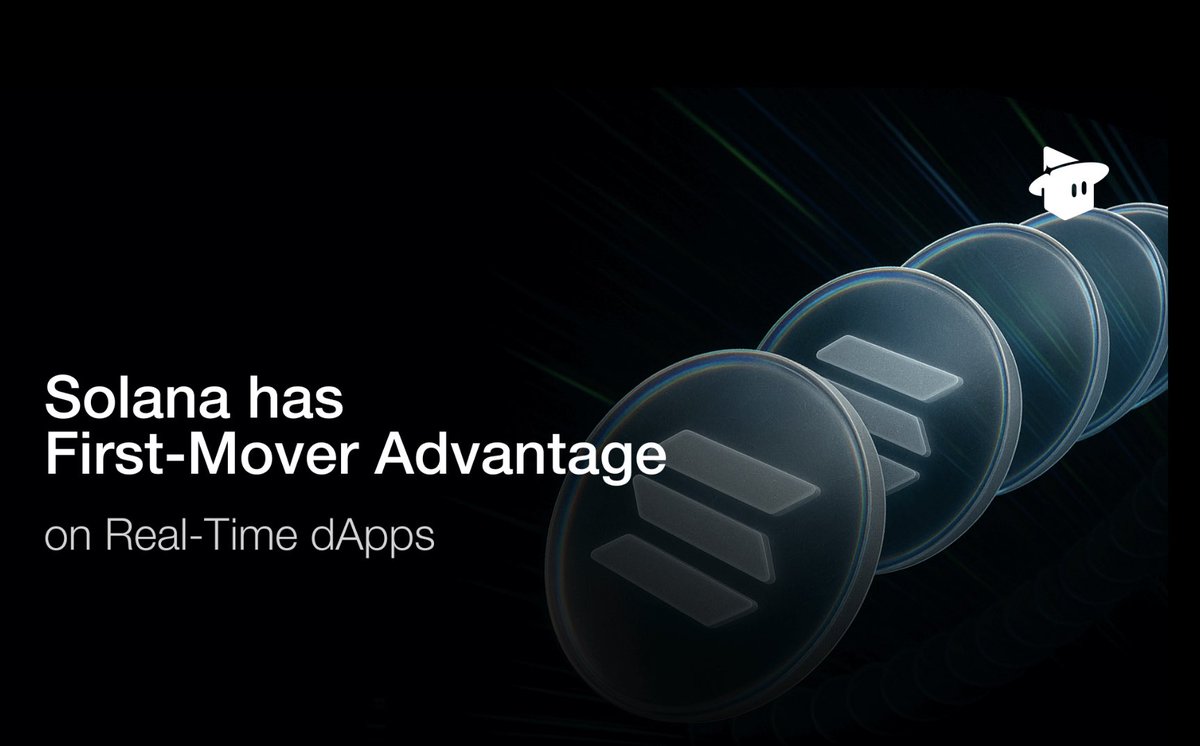
Dynamic Fraud-Proof Mechanisms: Adjustable challenge windows and dispute resolution ensure state integrity and prevent malicious activity during rollup execution.
-
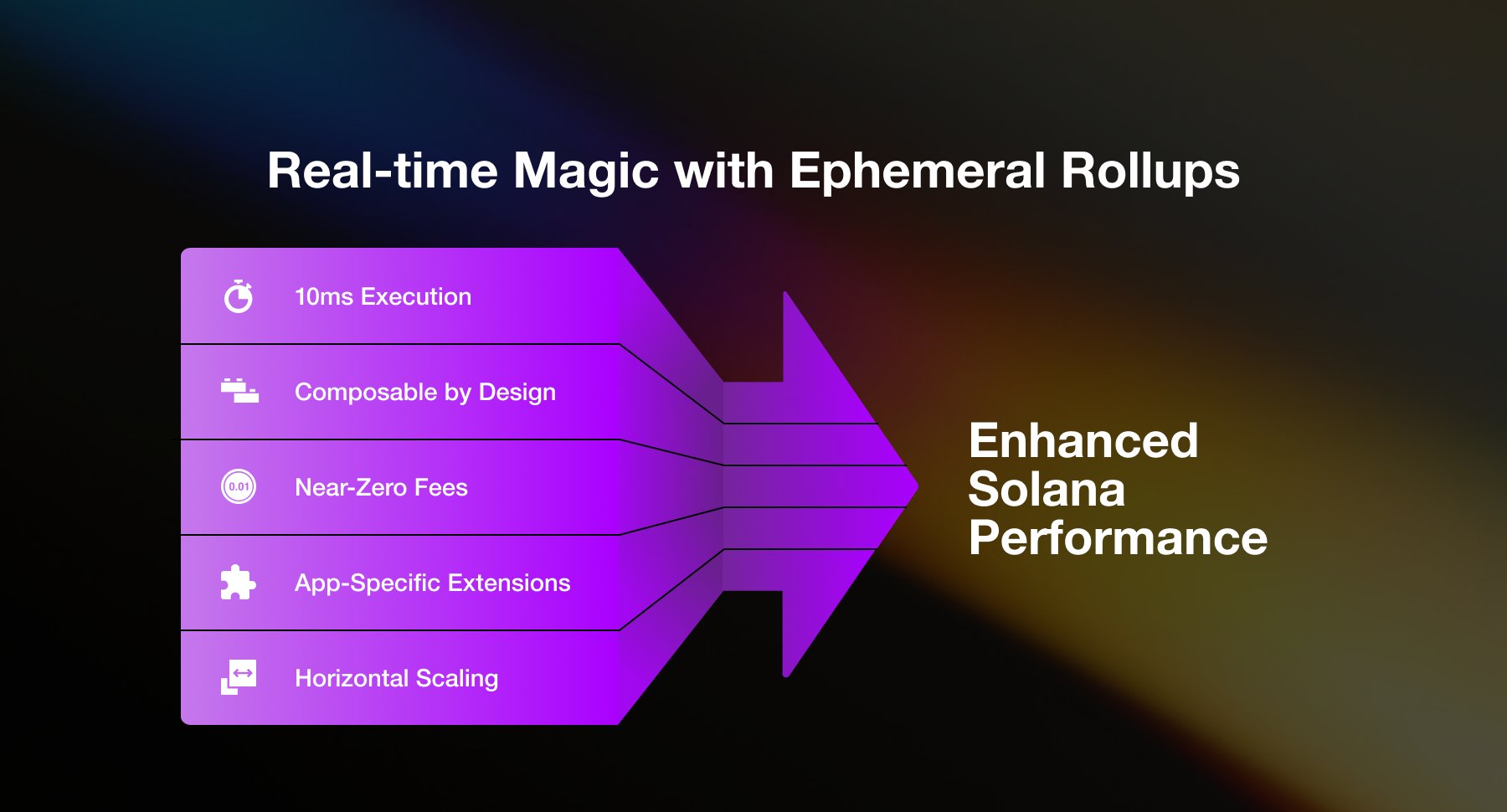
Enabling New Real-Time Use Cases: Ephemeral Rollups power high-frequency trading (e.g., FlashTrade), ultra-fast on-chain gaming (Supersize.gg), and real-time decentralized communication (dTelecom), expanding Solana’s dApp and DeFi ecosystem.
This architecture brings several strategic advantages:
- On-Demand Execution: Developers can deploy custom execution environments only when needed, optimizing cost and performance across peak periods.
- Ultra-Low Latency: With transaction processing speeds below 50ms globally, user experience matches or exceeds Web2 standards.
- No Fragmentation: Full composability with Solana Layer 1 ensures dApps retain access to existing liquidity pools and protocols without added friction.
The result? Applications like FlashTrade (for decentralized derivatives), Supersize. gg (multiplayer gaming), and dTelecom (real-time messaging) are already leveraging these capabilities to push boundaries in both DeFi and consumer experiences.
The Technical Backbone: How Ephemeral Rollups Work
The underlying mechanics involve delegating specific accounts to a custom Solana Virtual Machine (SVM) validator optimized for high throughput. During an Ephemeral Rollup session, this validator processes transactions off-chain but within a fully trustless environment. Once the session concludes, often after handling millions of transactions in seconds, the final state is cryptographically committed back to Layer 1 for settlement.
This approach sidesteps many challenges associated with traditional rollups: there are no persistent chains to maintain or bridge risks to manage. Security remains robust thanks to dynamic fraud-proof systems that allow disputes during adjustable challenge windows, a critical feature for maintaining trust without sacrificing speed.
The implications for capital efficiency are profound. By enabling elastic scaling without fragmenting liquidity or requiring additional tokens, Ephemeral Rollups position Solana as a leader in real-time blockchain integration, a key differentiator as competition intensifies across L1s and modular frameworks alike.
With Binance-Peg SOL (SOL) holding firm at $210.24, the market is signaling strong confidence in Solana’s ability to deliver on its real-time scaling promises. As more dApps and DeFi protocols begin to integrate ephemeral rollup technology, the competitive landscape is rapidly shifting in favor of platforms that can offer both speed and seamless composability.
Strategic Use Cases: From Gaming to High-Frequency DeFi
The most immediate beneficiaries of this breakthrough are sectors where latency and throughput directly impact user experience and capital flows. On-chain gaming, for example, has long struggled with the inherent delays of blockchain consensus. With Ephemeral Rollups, projects like Supersize. gg are achieving gameplay responsiveness under 30 milliseconds, on par with leading Web2 multiplayer platforms.
In decentralized finance, FlashTrade’s adoption of ephemeral rollups is enabling high-frequency trading strategies that were previously impractical on-chain. Traders can execute complex derivatives positions with minimal slippage and near-instant settlement, all while retaining access to Solana’s deep liquidity pools.
Communication infrastructure is also evolving. dTelecom’s use of these rollups for real-time messaging and VPN services demonstrates that even bandwidth-intensive applications can thrive on a decentralized backbone without sacrificing privacy or performance.
Security, Trust, and the Roadmap Ahead
No discussion of scaling solutions is complete without addressing security trade-offs. Ephemeral Rollups employ dynamic fraud-proof mechanisms with flexible challenge windows, allowing for rapid dispute resolution while maintaining trustless execution. This architecture ensures that state integrity is never compromised for the sake of speed.
MagicBlock’s phased rollout strategy further reinforces confidence in the ecosystem. Phase 1, expected by the end of Q2 2025, will introduce permissioned access for early adopters; by year-end, a fully permissionless model will allow anyone to launch nodes and participate in this new paradigm.
Why Ephemeral Rollups Matter for Solana’s Long-Term Value
The introduction of ephemeral rollup technology marks a significant inflection point for Solana dApps scaling. By solving for both throughput and composability without introducing fragmentation or bridge risk, this model offers a blueprint that other blockchains may soon emulate. The ability to elastically scale resources according to demand aligns perfectly with the unpredictable nature of consumer-facing applications, especially as user expectations continue to rise.
For investors tracking capital efficiency and protocol-level innovation, these developments are especially noteworthy at current SOL price levels ($210.24). The combination of technical progress and robust market support suggests a growing moat around Solana’s ecosystem as it competes with both monolithic L1s and modular superchain frameworks.
“Ephemeral Rollups are all you need if you want real-time blockchain integration without compromising on security or composability. “
To dive deeper into how these innovations are transforming scalability and latency for Solana dApps, including architectural diagrams and developer guides, see this comprehensive analysis: How Ephemeral Rollups Are Transforming Solana dApp Scalability and Latency.
